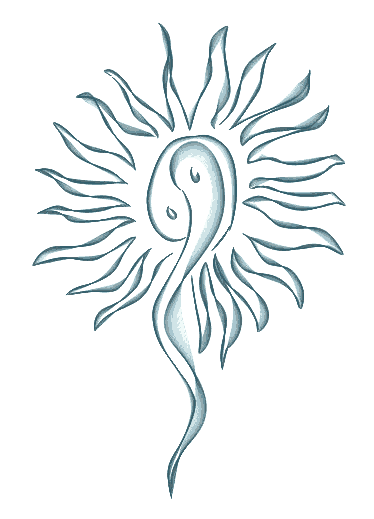







BODYWORK MODALITIES
Massage Therapy
Chronic Pain and Massage
Discover the Craniosacral System
Lymphatic Drainage
Active Release Therapy
Sports Massage
Hot Stone Massage
Healing Touch
Massage for Senior Years
Bowen Technique
Muscle Balance
Neuromusclula Therapy
Thai Yoga Massage
Chronic Pain and Massage
Discover the Craniosacral System
Lymphatic Drainage
Active Release Therapy
Sports Massage
Hot Stone Massage
Healing Touch
Massage for Senior Years
Bowen Technique
Muscle Balance
Neuromusclula Therapy
Thai Yoga Massage

OUR TEAM

Email: Britannia Body Works
Copyright © 2010 by "Britannia Bodywork and Wellnes Centre" • All Rights reserved • Privacy Policy • Disclaimer
Designed by Studio eh Design

BRITANNIA CLINIC ®
Dr. Gordon Hasick
Dr. Janet Major
Dr. Sloane Hunter
Dr. Jordan Ausmus
Dr. Gordon Hasick
Dr. Janet Major
Dr. Sloane Hunter
Dr. Jordan Ausmus

OUR AFFILIATES

St. John Neuromuscular Therapy
What is Neuromuscular Therapy?
Neuromuscular Therapy is a comprehensive program of soft tissue manipulation techniques that balance the central nervous system (brain, spinal column and nerves) with the structure and form of the musculoskeletal system. NMT is based on neurological laws that explain how the central nervous system maintains homeostatic balance. These same laws dictate how the central nervous system initiates pain response.
There are five principles to Neuromuscular Therapy:
1. Postural Distortion
2. Biomechanical Dysfunctions
3. Trigger Points
4. Nerve Compression/Entrapment
5. Ischemia
Ischemia is a lack of blood supply to the soft tissues, which causes them to be very sensitive touch.
Trigger Points occur when nerves fire impulses at a rapid speed into an area of the body other than that which has been traumatized. Because of trigger points, the cause of serious pain may often be far from the actual site of the pain. This, in turn, inhibits proper blood flow, which causes ischemia an often leads to more pain and discomfort.
Nerve Compression and Entrapment is pressure on a nerve by bone, cartilage or soft tissue. The role of the soft tissues in nerve compression is vital. Failure to treat the associated soft tissue often treats the symptom without eliminating the cause of the pain. Nerve entrapment is the most common type of pain and always causes ischemia. Ignored, it can produce associated trigger points.
Postural Distortion or muscular contraction occurs when there is an imbalance of the musculoskeletal system resulting from movement of the body off the coronal, midsagital or horizontal planes. When the body tries to compensate in an effort maintain structural balance, muscle contraction, body distortion, and pain result. For example, lower limb-length inequality can cause a tilted pelvis, which usually results in a compensatory scoliosis that is maintained by sustained muscular effort.
Biomechanical Dysfunction is an imbalance of the musculoskeletal system resulting in faulty movement patterns. Repetitive strain of certain soft tissue result in adapted movement patterns that become muscular “habits” and must be reeducated.
What is Neuromuscular Therapy?
Neuromuscular Therapy is a comprehensive program of soft tissue manipulation techniques that balance the central nervous system (brain, spinal column and nerves) with the structure and form of the musculoskeletal system. NMT is based on neurological laws that explain how the central nervous system maintains homeostatic balance. These same laws dictate how the central nervous system initiates pain response.
There are five principles to Neuromuscular Therapy:
1. Postural Distortion
2. Biomechanical Dysfunctions
3. Trigger Points
4. Nerve Compression/Entrapment
5. Ischemia
Ischemia is a lack of blood supply to the soft tissues, which causes them to be very sensitive touch.
Trigger Points occur when nerves fire impulses at a rapid speed into an area of the body other than that which has been traumatized. Because of trigger points, the cause of serious pain may often be far from the actual site of the pain. This, in turn, inhibits proper blood flow, which causes ischemia an often leads to more pain and discomfort.
Nerve Compression and Entrapment is pressure on a nerve by bone, cartilage or soft tissue. The role of the soft tissues in nerve compression is vital. Failure to treat the associated soft tissue often treats the symptom without eliminating the cause of the pain. Nerve entrapment is the most common type of pain and always causes ischemia. Ignored, it can produce associated trigger points.
Postural Distortion or muscular contraction occurs when there is an imbalance of the musculoskeletal system resulting from movement of the body off the coronal, midsagital or horizontal planes. When the body tries to compensate in an effort maintain structural balance, muscle contraction, body distortion, and pain result. For example, lower limb-length inequality can cause a tilted pelvis, which usually results in a compensatory scoliosis that is maintained by sustained muscular effort.
Biomechanical Dysfunction is an imbalance of the musculoskeletal system resulting in faulty movement patterns. Repetitive strain of certain soft tissue result in adapted movement patterns that become muscular “habits” and must be reeducated.


















